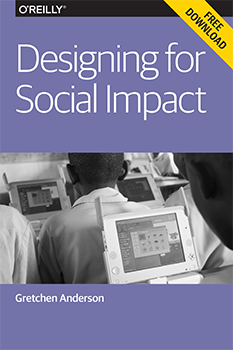"Social-impact design" entries

Golden opportunities for design lie in social-impact projects
Designers can find fertile ground in governmental, philanthropic, and health care domains.
Download the free report “Designing for Social Impact,” by Gretchen Anderson. Editor’s note: this is an excerpt from the report.
During the 2000 United States presidential election, product designers and developers discovered an uncomfortable truth about our nation. American democracy, long held up as a beacon for others to follow, was susceptible to “user error.” As the stories of hanging chads, bad ballot layouts, and unclear instructions unfolded, it became clear that the election process contained quite a few bugs from an end-user perspective. Dana Chisnell, the creator of Field Guides for voting, was inspired to fix such problems the best she knew how — by applying user-entered design practices. Until the 2000 presidential election, she pointed out, a “usable” ballot was one that was readable by the machines that count them. But the “hanging chad” phenomenon brought to everyone’s attention the role that user error (or rather, terrible design) can play in affecting outcomes and a nation at large. This is but one example of how the design of simple things has an impact far beyond its immediate surroundings. It’s part of a clear case that more comprehensive: thoughtful design can have more predictable, measurable effects on our world at large.More and more, designers of all stripes seek projects and organizations that have a mission to serve the greater good at their core. Partly, it stems from an innate desire to use our skills to their highest potential. It also reflects broader trends in design and tools that make it possible for us to tackle problems that we observe in society, measure their root causes, and more quickly and efficiently test what works to create positive change. The inherent “usability” issues within the systems that surround social impact objectives are becoming more evident. Design increasingly has the ability to run programs at scale that address more systemic issues that arise from a lack of infrastructure or overly complicated regulation. Read more…
